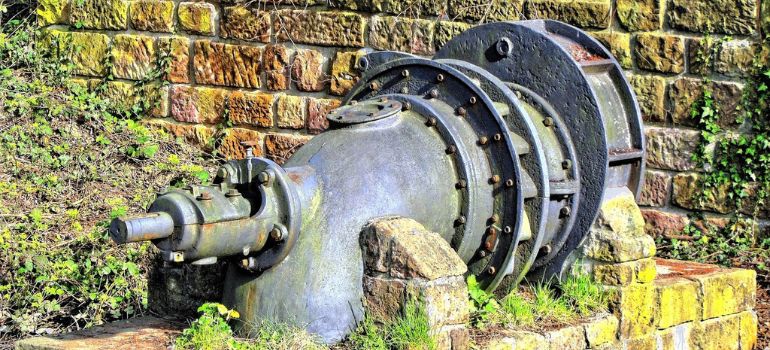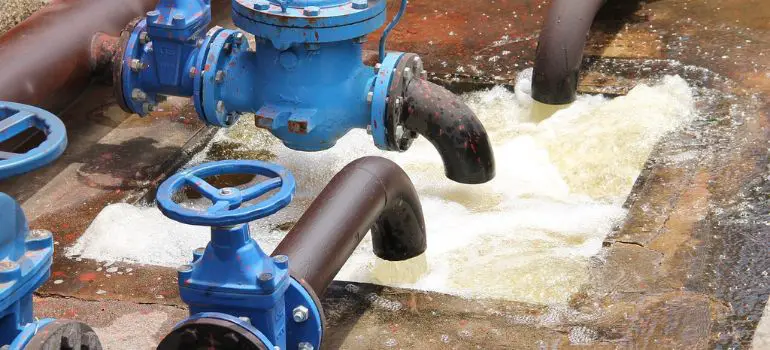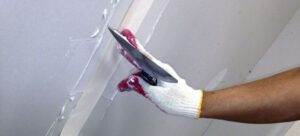Introduction
Pumping water from great depths, such as 1000 feet, can be a challenging task that requires careful planning and the right equipment. Whether you’re looking to access groundwater for agricultural purposes, residential use, or industrial applications, this article will guide you through the process of pumping water from significant depths effectively. In this comprehensive guide, we will cover everything from selecting the appropriate pump to ensuring the system’s efficiency and durability.
Understanding the Depth
Assessing Your Water Source
Before diving into the process of pumping water, it’s crucial to assess your water source. Determine the depth of the water table and the quality of the water. Is it a borewell, a deep well, or another water source? This initial assessment will help you plan your pumping system accordingly.
Choosing the Right Pump
Selecting the right pump is the cornerstone of successfully pumping water from 1000 feet. Submersible pumps are often the preferred choice for deep wells due to their efficiency and reliability. We’ll delve into the factors to consider when choosing the appropriate pump for your specific needs.
Pumping Mechanism
Submersible Pump Installation
Installing a submersible pump for pumping water from a depth of 1000 feet requires precision and attention to detail. Proper installation ensures the efficiency and longevity of your pumping system. Here’s a step-by-step guide on how to install a submersible pump correctly:
1. Gather Your Tools and Materials
Before you begin the installation process, make sure you have all the necessary tools and materials, including:
- The submersible pump unit
- Pipe and fittings (PVC or stainless steel)
- Cable and wire connectors
- Teflon tape or pipe thread sealant
- Wrenches and pliers
- Wire stripper and crimping tool
- Electrical conduit and fittings
- A stable lifting device or hoist
- Safety equipment, including gloves and safety glasses
2. Ensure Proper Well Casing
Inspect the well casing to ensure it is in good condition and free from debris. Clean the well casing if necessary and make sure it is wide enough to accommodate the submersible pump unit.
3. Measure and Cut Pipes
Measure the depth of your well to determine the length of pipes needed. Cut the pipes to the appropriate length, ensuring they fit comfortably into the well casing.
4. Assemble and Connect Pipes

Assemble the pipes and fittings, using Teflon tape or pipe thread sealant on threaded connections to prevent leaks. Connect the pipes to the submersible pump unit and secure them tightly. Ensure the pump’s intake is at least 10-15 feet below the water level to prevent the pump from drawing in air.
5. Attach the Pump and Cable
Securely attach the submersible pump to the lifting device or hoist. Slowly lower the pump and pipes into the well casing, being careful not to damage the pump or cables during the descent.
Connect the pump’s power cable to the electrical wire using waterproof connectors and ensure a watertight seal. Make sure the cables are of sufficient length to reach the control box on the surface.
6. Position the Pump and Secure Cables
Position the submersible pump at the desired depth inside the well casing. Ensure the pump is level and not touching the sides of the casing. Use pipe clamps or cable guards to secure the electrical cables and prevent them from tangling or getting damaged.
7. Install the Control Box
Install the control box on the surface near the wellhead. Connect the electrical wires from the pump to the control box following the manufacturer’s wiring diagram. Ensure all connections are secure and properly insulated.
8. Prime the Pump
Prime the submersible pump by filling the pump and pipes with water. This can be done by opening a valve or using a priming plug, depending on your system.
9. Test the System
Once everything is in place, power up the submersible pump system and check for any leaks or abnormal noises. Monitor the pump’s performance and make adjustments if necessary.
10. Seal the Well Casing
Finally, seal the well casing to prevent contamination and protect the pump. Ensure the well cap or cover is securely in place, providing easy access for maintenance when needed.
Power Source and Electrical Requirements
When pumping water from a depth of 1000 feet, providing a stable and reliable power source is crucial for the operation of your submersible pump. Here’s a detailed guide on power sources and electrical requirements to ensure your pumping system functions efficiently:
1. Determine Power Supply
Before installing your submersible pump, it’s essential to determine the most suitable power supply for your location. There are typically two options:
a. Grid Electricity
- If you have access to a reliable electrical grid, connecting your pump to it is a straightforward and cost-effective option.
- Ensure that the electrical wiring and circuitry meet the pump’s voltage and amperage requirements.
b. Generator
- In remote areas or locations with unreliable grid electricity, using a generator can be a viable choice.
- Select a generator with the appropriate capacity to match the power needs of your submersible pump.
- Install an automatic transfer switch (ATS) to seamlessly switch between grid and generator power during outages.
2. Voltage and Phase Compatibility
Ensure that the voltage and phase requirements of your submersible pump match the power source. Common voltage options include 110V, 220V, and 440V, depending on the pump’s size and capacity. The pump’s documentation will specify its voltage and phase requirements.
3. Cable and Wiring
Proper electrical cable and wiring are essential for a safe and efficient pumping system. Here are key considerations:
a. Cable Type
- Use submersible pump cable specifically designed for underwater use. These cables are insulated to prevent water intrusion.
- Select the appropriate cable size to minimize voltage drop, which can affect pump performance.
b. Wiring Protection
- Protect electrical connections from moisture and physical damage by using waterproof connectors and conduit.
- Seal all cable entry points into the well casing and control box to prevent water ingress.
4. Control Box
The control box is a critical component that regulates the operation of your submersible pump. Here’s what to keep in mind:
a. Size and Capacity
- Choose a control box that matches the motor’s horsepower rating and voltage requirements.
- Ensure that the control box is rated for the depth of your well.
b. Installation
- Mount the control box in a dry and accessible location above ground, close to the wellhead.
- Follow the manufacturer’s wiring diagram to connect the control box to the power supply and pump.
5. Surge Protection
Install surge protectors and voltage stabilizers to safeguard your submersible pump and electrical components from power surges and fluctuations. These devices can extend the lifespan of your equipment and prevent damage.
6. Grounding
Proper grounding of all electrical components is essential for safety. Ensure that the well casing, control box, and pump motor are adequately grounded according to local electrical codes.
7. Regular Maintenance
To maintain the reliability of your electrical system, perform regular maintenance checks. Inspect wiring, connectors, and control box components for signs of wear or damage. Clean and tighten connections as needed.
8. Professional Installation
If you are unsure about electrical requirements or lack the necessary expertise, it’s advisable to seek professional help for the installation and wiring of your submersible pump system. A qualified electrician or pump technician can ensure that everything is correctly set up and compliant with local regulations.
Maintaining Efficiency
Monitoring Water Quality
Ensuring that the water you’re pumping remains clean and safe for use is vital. We’ll explore methods to monitor water quality and introduce filtration systems to maintain the integrity of your water source.
Regular Maintenance and Troubleshooting
Like any machinery, submersible pumps require maintenance. We’ll outline a maintenance schedule and provide troubleshooting tips to address common issues that may arise during the pumping process.
Ensuring Durability
Protecting Your Investment
A deep well pumping system is a significant investment. We’ll discuss protective measures to ensure the longevity of your equipment, including pump protection devices and routine inspections.
Safety Precautions
Safety should always be a top priority when dealing with deep well pumping systems. We’ll highlight safety precautions for installation, operation, and maintenance to prevent accidents and injuries.
Maintaining Efficiency and Sustainability
Monitoring Water Quality
To maintain water quality and ensure that the water pumped from 1000 feet is safe for consumption or use, regular monitoring is essential. Conduct periodic water quality tests to check for any contaminants or impurities. Depending on the results, you may need to implement additional filtration or treatment systems to purify the water.
Regular Maintenance and Troubleshooting
To keep your deep well pumping system running smoothly, it’s crucial to follow a regular maintenance schedule. This schedule should include tasks like inspecting the pump, checking for leaks, and lubricating moving parts. Keep an eye on the pump’s performance and be proactive in addressing any issues that arise.
Common issues that may require troubleshooting include reduced water flow, strange noises from the pump, or sudden power fluctuations. In such cases, refer to the manufacturer’s guidelines for troubleshooting or seek professional assistance if needed.
Ensuring Durability and Safety
Protecting Your Investment
Your deep well pumping system represents a significant investment, and protecting it is paramount. To safeguard your equipment, consider using pump protection devices like surge protectors and voltage stabilizers. These devices can help prevent damage to the pump and electrical components due to power fluctuations.
Additionally, regular inspections are essential to identify any signs of wear and tear. Address any issues promptly to extend the lifespan of your equipment and reduce the risk of costly repairs or replacements.
Safety Precautions
Safety should always be a top priority when dealing with deep well pumping systems. Here are some key safety precautions to keep in mind:
- Electrical Safety: Ensure that all electrical components are properly grounded and that wiring is in good condition to prevent electrical hazards.
- Personal Protective Equipment: When performing maintenance or inspections, use appropriate personal protective equipment, including gloves, safety glasses, and ear protection.
- Ventilation: If working in confined spaces, ensure proper ventilation to prevent the buildup of harmful gases.
- Secure Well Cover: If your well has an opening, make sure it is securely covered to prevent accidents and contamination.
- Emergency Procedures: Familiarize yourself and your team with emergency procedures in case of accidents or equipment failures.
Conclusion
Pumping water from 1000 feet is a complex but achievable task with the right knowledge and equipment. By assessing your water source, choosing the correct pump, understanding the pumping mechanism, and maintaining efficiency and durability, you can ensure a reliable and sustainable water supply for your needs.
FAQs
Yes, it is possible with the right equipment and proper planning. Submersible pumps are commonly used for residential water supply from great depths.
Challenges may include selecting the right pump, ensuring a stable power source, monitoring water quality, and addressing maintenance issues.
Yes, solar-powered deep well pumps are an environmentally friendly and cost-effective option, especially in remote areas.
Regular maintenance should be performed at least once a year, with more frequent checks if you notice any issues.
Yes, regulations may vary by location, so it’s essential to check with local authorities and obtain any necessary permits before starting a deep well pumping project.




